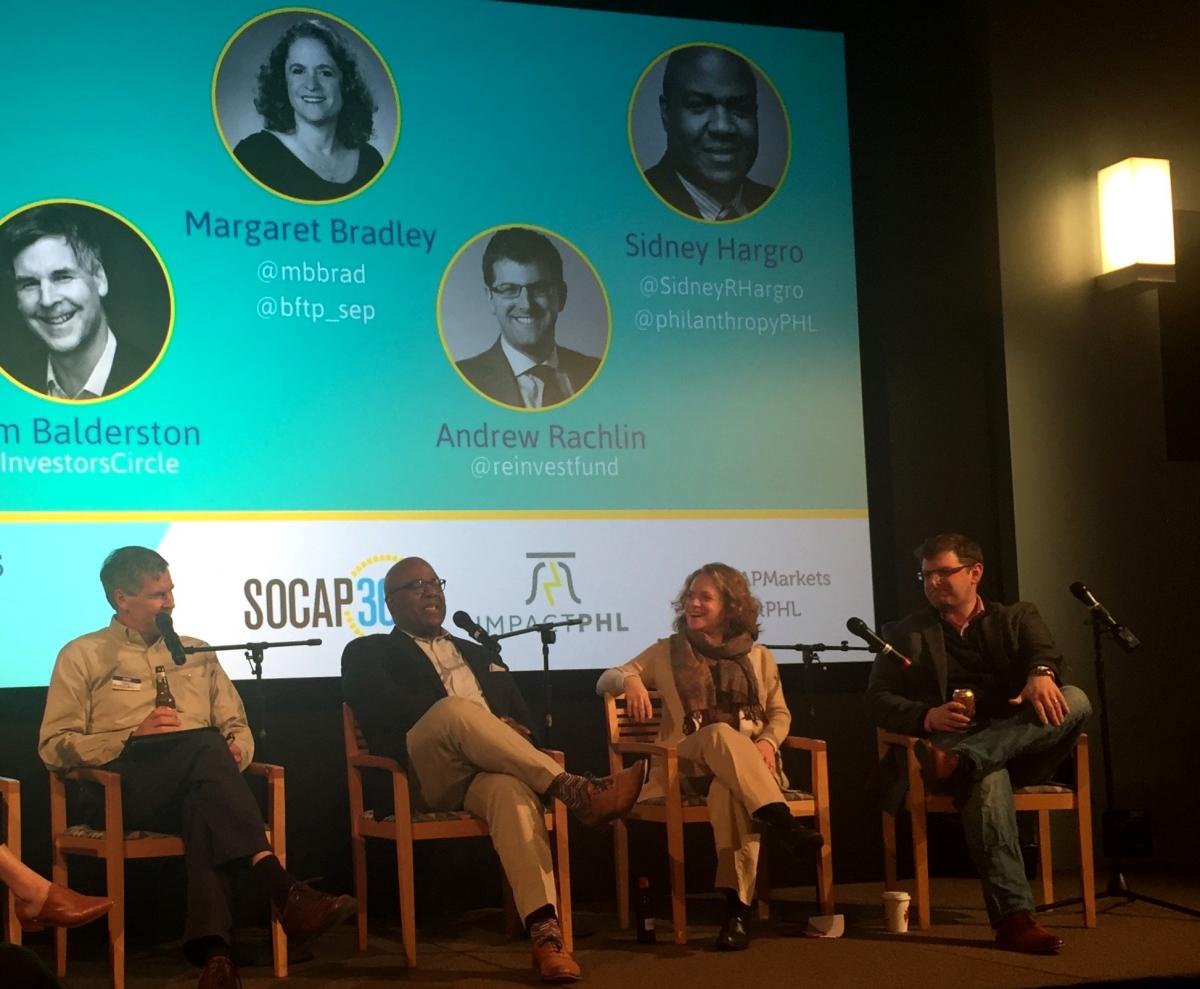Via Generocity | By Julie Zeglen / STAFF

Philadelphia needs more cash.
Admidst crippling poverty and a proliferation of struggling nonprofits, the city ranks 43rd of the United States’ 50 biggest cities in charitable giving, with residents donating an average of only 2.5 percent of their income.
Could the savior of our charitable woes be … capitalism?
We’ve written extensively on the region’s impact investing scene, which employs venture capital to support early-stage social enterprises, or mission-minded for-profits. But cross-sector funding innovation — philanthropy and impact investing alike — could spark the revitalization the region needs, as discussed at ImpactPHL’s and SOCAP’s “Building a Successful Investor Ecosystem for 21st Century Philadelphia” discussion on Wednesday evening.
The panel featured a handful of impact investors and philanthropy pros:
- Margaret Berger Bradley, director of investment partnerships and lead for social impact investments, Ben Franklin Technology Partners
- Sidney Hargro, executive director, Philanthropy Network Greater Philadelphia
- Tom Balderston, managing principal, SustainVC
- Andy Rachlin, managing director for lending and investment, Reinvestment Fund
Here were some of our favorite lessons from the discussion. Tl;dr — more capital will come when more people and institutions with wealth invest it.
1. Leaders of different sectors should talk to each other more.
Perhaps the most-shared stat to judge how well Philly as a whole is doing is the 25.8 percent poverty rate — but according to Hargro, we often miss “the great opportunity to rethink approaches” to lowering that rate.
Hargro, who told us when he was hired last year that one of his high-level goals for Philanthropy Network included making sure it’s a part of cross-sector discussions about solving Greater Philadelphia’s toughest problems, said he sees it as an opportunity that different sectors are discussing ways to tackle such big issues.
“What you see up here tonight is an example of that, whereas I think for many years,” he said, “philanthropy stayed with philanthropy, tech was over here, and the nonprofits were somewhere in the middle. [Now] we are saying, ‘Wait, if we’re going to look at this as a system, we have to have the opportunity to build relationships across those silos, and reimagine together.”
2. Foundations should invest beyond their required 5 percent.
Hargro said his work now involves examining three key themes of effectiveness for any people and institutions using capital to create change: policy, equity and innovation.
“Innovation for me means reimagining philanthropy — reimagining approaches to really looking at all of the capital that’s available out there, and [finding] ways to creatively use it beyond the typical 5 percent that is spent with grantmaking,” he said.
Private foundations are traditionally conservative with their corpus, or that 95 percent of foundations’ assets that remain after the foundation has granted out the mandatory five percent minimum of their endowments each year— though there have been notable local exceptions, including the Patricia Kind Family Foundation, the Untours Foundation and the Barra Foundation.
